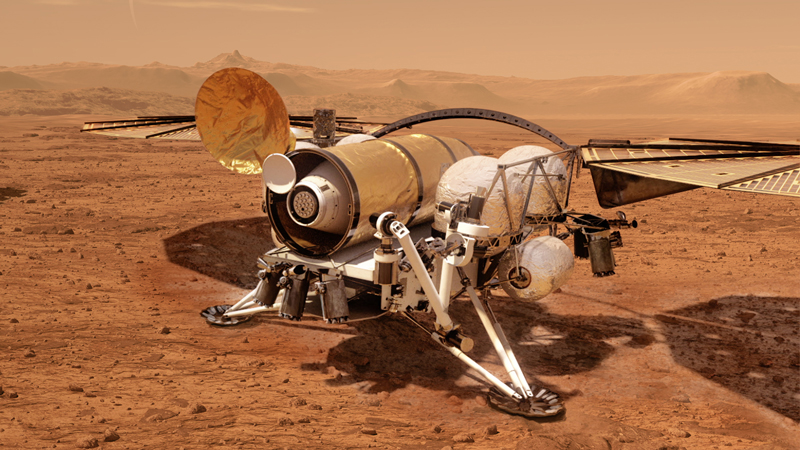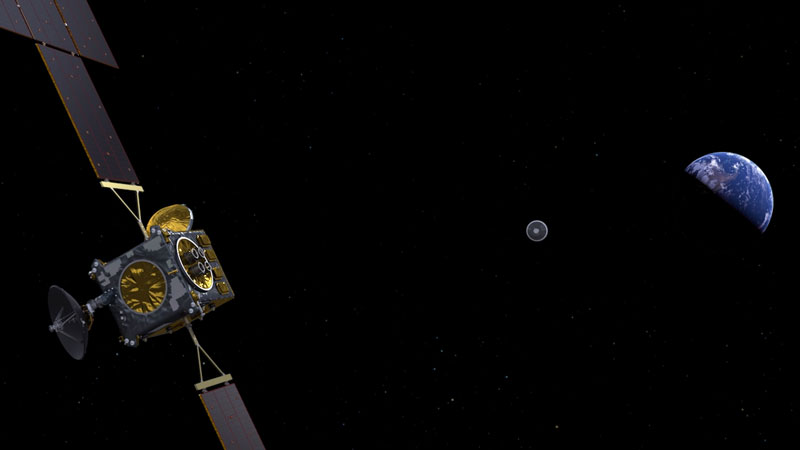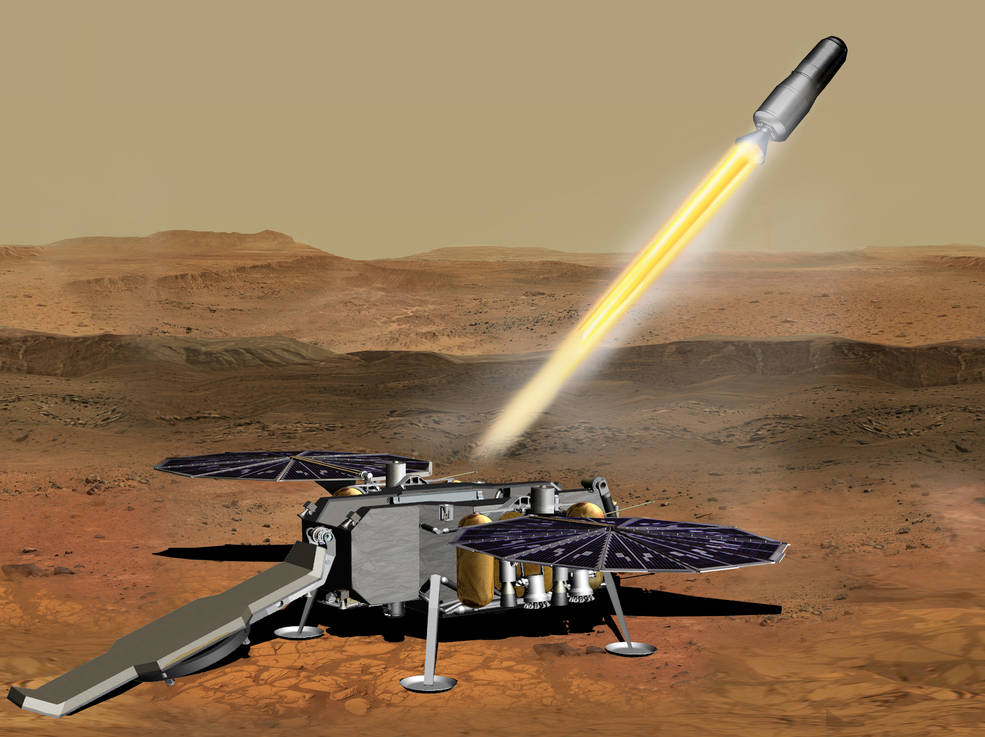
How NASA Plans To Send Mars Samples Back To Earth
Through multiple different Apollo missions, NASA was able to retrieve samples from the Moon and return them to Earth. These samples are still studied today and provide a lot of invaluable information about the Moon and much more. We have sent multiple rovers to the surface of Mars but have yet to retrieve any samples from the planet itself.
NASA is planning to retrieve some Mars samples and send them to Earth without any human intervention. Named the Mars Sample return or MSR, the agency has an ambitious plan to send samples nearly 200 million miles back to Earth. This plan consists of many different steps including the Sample Retriever Lander, Fetch Rover, Mars Ascent Vehicle, and more. All of which are vital to successfully getting pieces of Mars all the way to Earth.
While we have not yet sent humans to the surface of the red planet, we have quite a lot of technology including a rover and even a helicopter. While it’s expected to be quite a while before humans step foot on Mars, NASA is confident they can retrieve samples in a different way. These will help us learn much more about the distant planet and the universe we live in.
What Is MSR?

The Mars Sample Return is a proposed mission to return samples from the surface of Mars to Earth. NASA and the European Space Agency, or (ESA) are working to plan ways to bring the first samples of Mars rock and broken rock/dust back to Earth for detailed study. The Mars Perseverance rover is the first leg of this international interplanetary relay team. Its job is to collect and cache samples on Mars. Two Mars Sample Return missions are planned to follow in Perseverance’s footsteps to the vicinity of Jezero Crater. The first would land near or in Jezero, collect and then launch the sample cache off the Red Planet. The second would capture it in Mars orbit, and then bring it back to Earth safely and securely in the early to mid 2030s. These first collected and returned samples could answer a key question: did life ever exist on Mars? Only by bringing the samples back can we truly answer the question by using the most sophisticated, state-of-the-art labs, at a time when future generations can study them using techniques yet to be invented.
As you can imagine, the process of sending complex and large equipment to the surface of Mars is extremely expensive and not very practical. On Earth, however, we have access to massive state-of-the-art labs which are filled to the brim with different pieces of vital equipment that can be used to test different things related to the sample. While NASA works to fit as many scientific components onto rovers such as Perseverance, there is only so much they can add. These are some of the major benefits of returning the samples to Earth. As of right now, a lot of work has gone into different aspects of the complex MSR process. Specifically, just recently NASA selected Lockheed Martin to build the Mars Ascent Vehicle (MAV), a small, lightweight rocket to launch rock, sediment, and atmospheric samples from the surface of the Red Planet. This award is a very crucial step in the MSR process that gets the agency closer to retrieving the first-ever martian samples. In addition, Perseverance has already made quite a bit of progress and has multiple Martian samples packed and ready for the next step. While a lot of aspects of the Mars Sample Return mission are happening right now, NASA has been planning this for many years.
Mars Sample Return Steps

Now that we know the MSR plan, and why NASA wants to retrieve samples from Mars, let’s look at how the agency plans on doing it. It all starts with the Sample Retriever Lander. A NASA-led Sample Retrieval Lander launches to Mars in the mid 2020s, carrying with it an ESA-led sample fetch rover and a NASA-led Mars rocket. The lander would touch down close to Perseverance’s landing location, Jezero Crater, and deposit the fetch rover. The lead on this lander would be from JPL or Jet Propulsion Laboratory. You will see a common theme through each aspect of this mission which revolves around different agencies and companies working together to make the ambitious goal a reality. Once the Sample Retriever Lander has dropped off the fetch rover, the second main step begins. The fetch rover’s main job is to pick up the samples stashed by Perseverance, bring them back to the lander, and transfer them to the Mars rocket, the fourth runner in the relay chain.
By this point, Perseverance has not only gathered and secured multiple mars samples, but has dropped some off in order for the fetch rover to pick them up and transport them. The fetch rover is mainly developed by the European Space Agency. Next up the Perseverance rover returns samples to the lander. This relay team has an option built in to send an alternate runner to deliver the samples if needed. As part of this second option, Perseverance can retain some of its collected samples onboard and deliver them directly to the Mars rocket. This acts as insurance to help make sure the samples get to where they need to be. Perseverance is carrying 43 sample tubes, this means there is more than enough to drop some and keep some extras with the rover. Next, it starts to get very interesting with the Mars Ascent Vehicle. Once the samples have been transferred, the ascent vehicle will then launch from the surface and deploy a special container holding the samples into Mars orbit. The Mars Ascent Vehicle would be the first rocket ever to launch off the surface of Mars, transporting the sample return container into orbit. This component is developed and built by Marshall Space Flight Center, which is a part of NASA.
Now that the samples are in orbit around Mars, we move on to the Capture/Containment and Return System. The Capture/Containment and Return System (aboard the Earth Return Orbiter) captures the Orbiting Sample container, orients it, and transfers it into a clean zone for return to Earth. This is another very precise transfer that is being led by the Goddard Space Flight Center. The ESA-led Earth Return Orbiter is the fifth runner in this chain. It carries the NASA-led Capture Containment and Return System and Earth Entry Vehicle. The return orbiter launches from Earth in the mid 2020s. It meets the sample cache in Mars orbit. The return system within the orbiter captures and contains the samples, placing them in the entry vehicle. The Earth Return Orbiter then ferries the Earth Entry Vehicle and its precious cargo back to the vicinity of Earth, where the entry vehicle will separate and safely touchdown on land. Lastly, the Earth Entry System contains the orbiting sample inside a disk-shaped vehicle with a heat shield for safe entry through the Earth’s atmosphere.
Conclusion
We have managed to send rovers and even helicopters to the surface of Mars, but have yet to retrieve any samples from the surface of the red planet. NASA plans on changing this with an ambitious mission that is meant to send martian samples nearly 200 million miles back to Earth. It consists of 7 main vital steps in the entire process. All of which need to go perfectly in order for the mission to be a success. We will have to wait and see how the mission progress continues, and what things we learn from the first martian samples.
